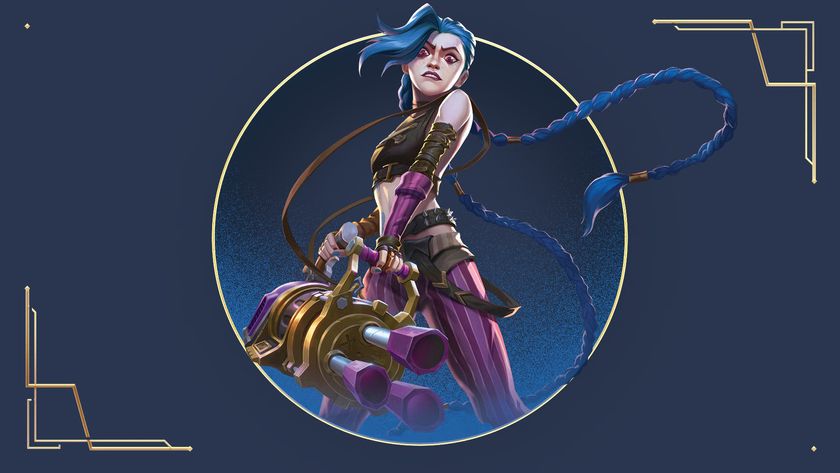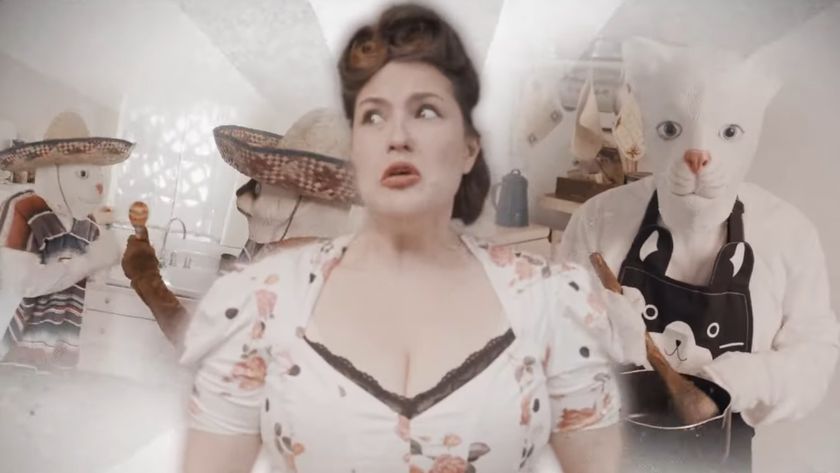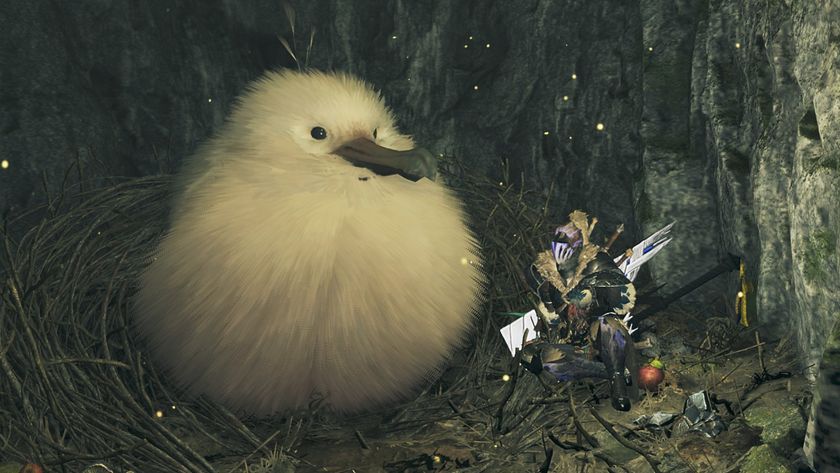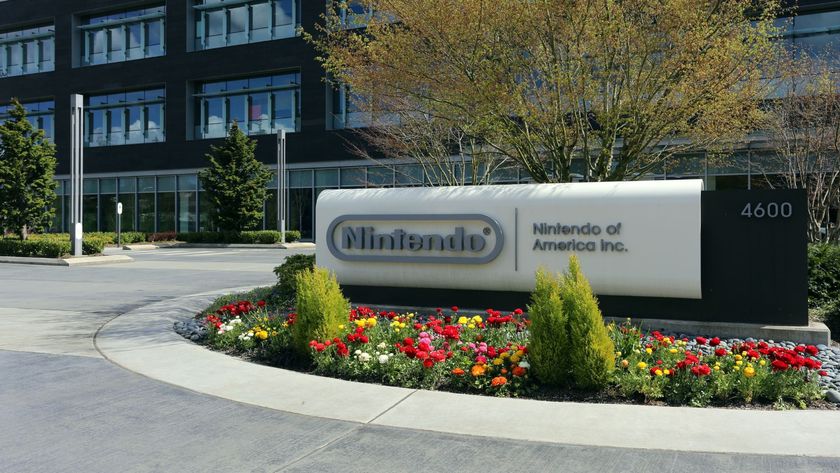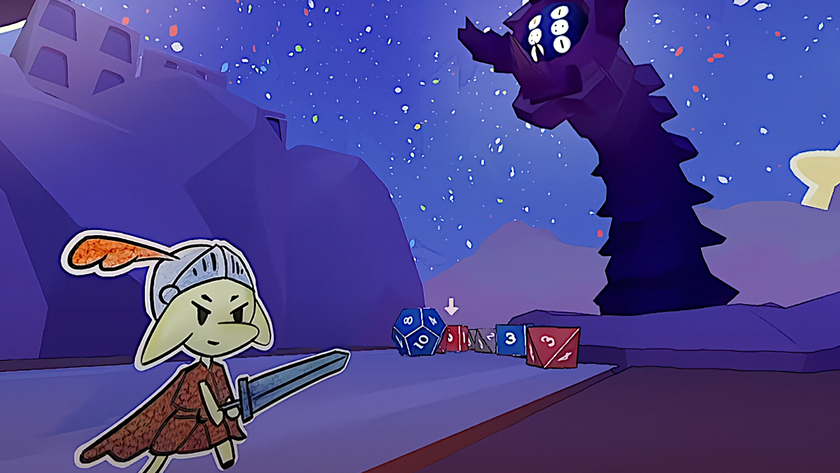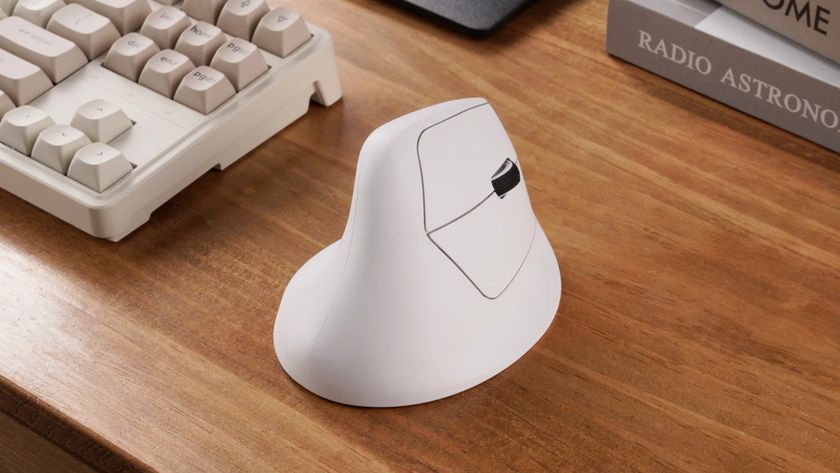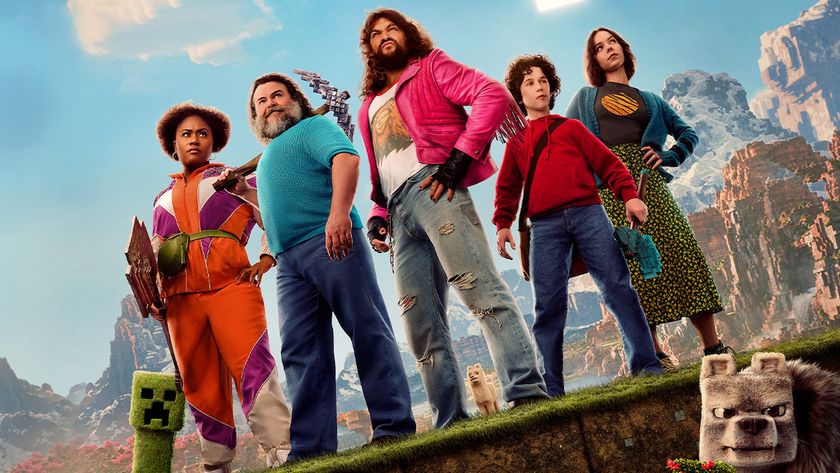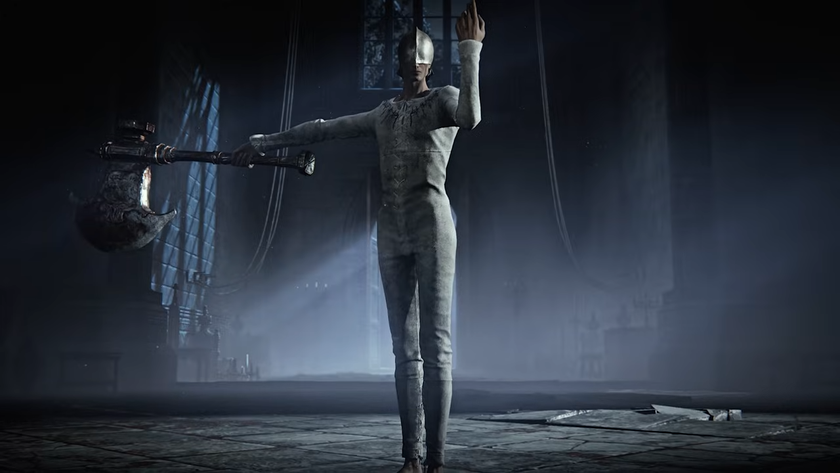
Uber Entertainment's Jon Mavor spoke with us for two hours about RTS games, his history with Total Annihilation and Supreme Commander, and his plans for Planetary Annihilation. We've edited that interview to highlight some of the most distinctive elements of Planetary Annihilation, and bore into greater detail about exactly how the game's ridiculous technology, scale, and design will work.
Looking for the Kickstarter? Look no further!
PCG: Why don't we start from the beginning? Where is Planetary Annihilation coming from?
Jon Mavor, CTO and co-founder, Uber Entertainment: Backing up to 1997, when I was working on Total Annihilation, I didn't realize at the time how awesome that game was going to be. To me it was just another game. I really liked RTS games at the time, I was into Command & Conquer and stuff. I just worked on that project and it turned out to be a really great game. Of all the games I've ever worked on, if I mention that game to somebody, it's the game that gets them excited.
In 2004 I went to Gas Powered. Chris [Taylor] was like, hey, come to Gas Powered and work on Supreme Commander. I ended up being the lead programmer on that game. It was a great game. Did you play SupCom at all?
Yeah, I played a fair bit of SupCom and SupCom 2.
Mavor: Okay. With Supreme Commander, I felt like we really made a fantastic game. We pushed the genre. I think the strategic gameplay was really awesome. But it didn't scratch my personal itch. Just because we made a game that was great doesn't mean that we can't make another game that's also great, that's a different twist on the same genre. I have my own ideas, and [art director] Steve Thompson—Steve worked on the original TA—I went to him and I said, “Hey, man, what do you think about doing another RTS game?” He was all over it. He really wants to do it.
The biggest gaming news, reviews and hardware deals
Keep up to date with the most important stories and the best deals, as picked by the PC Gamer team.
Our creative director here at Uber, John Comes , he came from Westwood, he's a Command & Conquer guy, and he also worked on Supreme Commander. We thought, look, we have all the ingredients here to do another RTS game. Let's put something together and do something that's really cool.
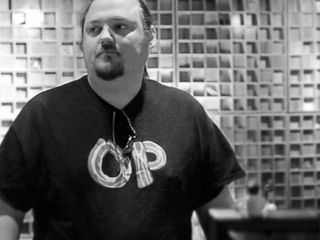
Supreme Commander's scale could become sort of mind-boggling. The sheer amount of things you had to look after and control was really challenging. When I hear about Planetary Annihilation, my first reaction is, “Oh my God, now there's entirely different planets, entirely different play areas.” So I'm curious... How are you going to handle the complexity that comes from a shift like that?
Mavor: There's a couple things. First of all, the idea behind the game is scalability. I think if you look at TA, it had that. It had this level of scalability where you could play on a pretty small map and have a pretty quick game with just one other person. You could play a 20-minute game of TA on a small map. That's what some people were comfortable with and willing to do. And then you could get on bigger maps where you get eight players and just take hours. You'd have insane numbers of units and all that stuff.
"That's who this game is being made for. The people who really do want to deal with the complexity of bajillions of units across multiple playfields and smashing planets together."
With Planetary Annihilation, it's the same thing. The idea is, if you want to have a quick game, you can do that. You can set a low unit count. You can play on a small map. You can do that kind of thing. The idea behind this game, though, is to give those fans that want to control vast armies the ability to do that. That's who this game is being made for. The people who really do want to deal with the complexity of bajillions of units across multiple playfields and smashing planets together. It's really oriented towards those kinds of players. So I don't necessarily see that as a problem. It's something I like about the game, how big it can get. The design goal here is to be able to do maps that are even bigger than what we did in some of these other games, in terms of player counts and stuff like that. Imagine you had four or five planets. Each planet starts out with five or six players on it. You battle it out on your planet first as you're building up your economy and you try to get bootstrapped and take out the other guys on your planet. Then the war goes interplanetary. And the game could last for 12 hours or something like that. I definitely envision those kinds of battles. This is really for the people that want that kind of stuff. That's what we're trying to do.

With multiple planets being involved, how are you going to handle transiting between planets? Is there going to be any kind of a fleet game, a space game, that governs how people pass between worlds?
Mavor: The short answer is, I want to not have too much in the way of that space battle stuff. I want it to be... I'm launching a rocket from this planet to that planet, and when that rocket is in flight, you're not doing a whole lot with it. You're not dealing with it. It's more like a transport mechanism. And the reason for that is, I think space battles, space armadas and stuff like that, require a completely different kind of interface and a completely different way of handling it. I want the combat to be mostly ground-based. We will have satellites, a satellite layer around the worlds, where there can be some space stuff that happens.
We should talk a little bit about the planetary technology as well. One of the difficult things about making these kinds of games is creating the maps. The direction that we're going to go with the map editor in this game is basically... These planets are going to be procedurally generated, and then there's a tool within the game... You could basically go in and say, I want this much ground cover, I want this much water. Or if you're creating a moon, I want this kind of crater density, or I want it to be this hilly. And then after it auto-generates... Think of how Minecraft generates a world. It'll automatically generate a world, and then you can go in and customize it after that, using the editor part. People are going to be able to build their own levels from within the game. That's a really important goal for us. If you look at some of the greatest RTS games, they've all had these kinds of built-in level editors. It's something that we never really did with any of the other games.
How is terrain going to affect gameplay?
Mavor: There's two different things. There's terrain types and then there's planet archetypes. A planet archetype would be... You start off and say, okay, this is going to be a moon. I want it to be this big, so you set the size of it, and it generates a planet of that size. Then, what are the implications of being a moon archetype? You have no air, so things like windmills don't work. It's easier to get on and off the planet. If you're on a traditional moon, you're going to end up with a lot of gray regolith-type stuff and craters. So the controls you have for building that planet would be different from an Earth-type planet.
An Earth-type planet would be, how big is it, and then how much of each terrain type? How much forest? How much plain? How much water? The number of terrain types isn't really defined. But from a planetary perspective, we're going to do Earth-type plants, Mars-type planets, and moons, as well as outer asteroids. I guess that's effectively four planetary types. Within that, each one is going to have their own terrain types. As far as how they impact gameplay, there's a bunch of different things.
Think about an asteroid in the outer belt. If you look at a company called Planetary Resources, they have all this investment from billionaires and stuff, and they're doing asteroid mining. They want to go out there and mine different asteroids. There are asteroids out there with metal content that is far beyond anything you would find on earth. Most of the nickel mines and heavy metal mines that we find on Earth are actually asteroid impact points. If you got to the outer asteroids, the type of terrain there means you have a lot of asteroids. There's a reason to go out there and get on those things, to gather some of those higher-density metals and things like that.
It kind of seems like, in a lot of ways, you're flying in the face of a lot of the ways people make RTS right now. I'm curious as to why you seem to be going in the opposite direction, going bigger.
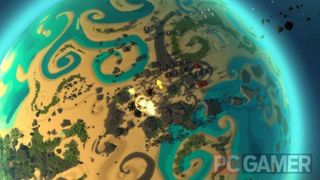
Mavor: You can look at DOTA as an example of where the RTS genre has gone. You went from Warcraft III to, hey, let's just control one unit. That's basically what DOTA is. It's an RTS where you control one unit. And that's great, that's fun. I love DOTA. I love Monday Night Combat, which is very much a DOTA-inspired game. Super Monday Night Combat is basically third-person DOTA. So we have no problem with bringing you down to a level where you're controlling just one unit.
"Honestly, it's just fun to have big armies and smash them against one another."
But there's this whole other genre where it's actually a strategic RTS, like a TA or a SupCom, and nobody is making those games anymore. I don't think it's just because people don't want to play them. I think it's because not as many people want to play them as want to play something like a StarCraft. There's really been, I think, these two different genres of RTS games. The Warcraft/StarCraft zoomed-in-close, very micro-intensive games, and then there's the more strategic games where it's about building up your resource base and having lots of units. Honestly, it's just fun to have big armies and smash them against one another. It's fun to work on a larger scale. Some people appreciate that kind of gameplay. The guys here that are working on this game with me are people who enjoy that style of gameplay. We like DOTA as well, but nobody is doing this anymore. The only way that we're going to get to make a game like this is if there's enough fans out there who want to support it.
So you're right. If we were going for a traditional publishing model to make an RTS, I think we'd be forced to go the direction that all RTS has been going. Which, as you point out, is simplified and micro and almost focusing on what I'm doing with one particular unit at a time. I think there's room to make more different types of RTS.
That touches on something I wanted to bring up: with the action happening across all these different play areas, it would seem like situational awareness will become a real challenge for the player. I might be really focused on an intense battle on one planet, and then something else equally important begins to happen on a moon somewhere far away.
Mavor: There are two things that we're doing to address that. When you're zoomed out to the solar system scale and you can see everything that's going on, we're putting down big icons that represent where your base locations are, with a status on them.
The other thing I'm going to do... If you remember, Supreme Commander supported multiple monitors. I don't know if you ever played it in that mode or not. You had one monitor that was your main one and a second monitor that was another view of the world somewhere else.
We're going to bring that feature back, but we're going to make it more flexible, so you're going to be able to split your viewpoint and look at your different bases on the same screen. You can have a viewpoint that's got your moon base, a viewpoint that's on the asteroids, and then a viewpoint on the planet if you want to.
So like a bank of security cameras...
Mavor: Exactly. And they're all active windows. You can do everything in those windows, contextually, that you'd be able to do in the main window. Now, I don't necessarily expect every player of the game to split their thing into a bunch of windows and use that, because I really want the high-level strategic awareness to be there. But advanced players are definitely going to be able to do that.
